Create Captivating Characters. This is what all writers want to do. No doubt about it. The doubt arrives when we come to the How. How do we Create Captivating Characters to inhabit our stories? How do you make them inhabit your story?
Success for the storyteller is all about the characters you create. I’ve said that already in my last post, “Tell Strong Stories – How To Write a Great Main Character.” This is especially true for the storyteller of commercial fiction. The writer who must attract readers in large numbers.
We must Create Captivating Characters who possess the storytelling power to enthrall those readers. These characters captivate because our readers care about what happens to them. Before we explore how, specifically, to make that caring occur, let’s pin down your basics.
If you’re working on a novel now, where are you in that process? Are you at the beginning? If not, let’s imagine you are – either at the beginning or near it. Let’s put Beginner’s Mind to work for us and start from scratch as we explore how to Create Captivating Characters.
First of all, do you have a single, specific Main Character? Most successful stories have one main character. A first among equals who gives the story focus. Reader interest and agent-editor interest are best captured by a single, strong protagonist.
Have you named your single, strong protagonist? Give your main character a name up front, when you begin creating the story. Naming gives characters substance and reality, especially in your own consciousness as their creator. Even though that character name may change later.
 If you are not working on a novel now, choose a character from someone else’s story. Use that character for the exercise to come in this post. Feel free to change that character from the original author’s version. My personal choice would be Scout Finch, daughter of Atticus, in To Kill a Mockingbird by Harper Lee.
If you are not working on a novel now, choose a character from someone else’s story. Use that character for the exercise to come in this post. Feel free to change that character from the original author’s version. My personal choice would be Scout Finch, daughter of Atticus, in To Kill a Mockingbird by Harper Lee.
 Why is a strong main character so important? Because when we read about his joys, his hopes and dreams. When we witness his admirable qualities in practice, or sometimes the qualities we less readily relate to, as with Jay Gatsby in The Great Gatsby by F. Scott Fitzgerald, we recognize that this character has something important to lose.
Why is a strong main character so important? Because when we read about his joys, his hopes and dreams. When we witness his admirable qualities in practice, or sometimes the qualities we less readily relate to, as with Jay Gatsby in The Great Gatsby by F. Scott Fitzgerald, we recognize that this character has something important to lose.
We don’t want this strong main character to lose this important thing. The strength of his portrayal has invaded our imaginations. We identify with him as the valiant person we wish to be. We identify with what happens to him. We’ve been hooked in the heart because we care.
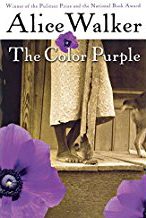 The more we care what happens to your character, the more solidly your story hook is set in us. You are succeeding most spectacularly as a storyteller when you create a character whom we will care about not just a little, but intensely. The way we care about, even weep for, Celie in The Color Purple by Alice Walker.
The more we care what happens to your character, the more solidly your story hook is set in us. You are succeeding most spectacularly as a storyteller when you create a character whom we will care about not just a little, but intensely. The way we care about, even weep for, Celie in The Color Purple by Alice Walker.
Make us care about your character, then make us care even more. Start by answering this question for your main character, or the character you are working with today. What, specifically rather than in general, makes us care about this character as she is currently portrayed?
Now, what can you add to that portrayal to make us care even more about her? You have created a character we already care about. We are emotionally tied to her fate. We hope for only good things to happen to her. To make us care even more, you must frustrate our hopes for her.
You must make bad things happen to this character we are growing to love. Circumstances must block her from what she needs. Circumstances that are scary for her must arise. Physically scary and emotionally scary obstacles must explode onto her path.
In other words, you must put your main character into Trouble and Danger. You must make her fate uncertain, preferably perilous. Put her on a roller coaster ride. Most crucial to your success as a storyteller, put us, as your readers, on this thrill ride with her.
Plunge your main character into hot water, then turn up the heat. You have made bad things happen to her, now you must make those bad things worse. Mercy is inappropriate here, no matter how much you have come to love her, as have the rest of us, your readers.
Intense, dramatic, powerful events make your character intense, dramatic and powerful. Trouble and Danger are intense, dramatic and powerful, especially when they inflict themselves upon someone you have made us care about – a lot.
This is the How – How to Create Captivating Characters. Intense, dramatic, powerful characters are Captivating Characters. They captivate us because we can’t take our eyes off them. We can’t take our hearts off them either. We care too much for that to be possible.
Create Captivating Characters and you will have us hooked. We will be hooked by your characters and by you as their author. We will prove how captivated we are by – drum roll please – buying your next book. And, that is something else all writers want. No doubt about it. Alice Orr – https://www.aliceorrbooks.com
– R|R –
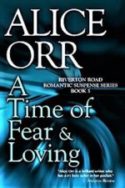 Amanda Miller Bryce is a captivating character. Find out why in Alice’s novel A Time of Fear & Loving – Riverton Road Romantic Suspense Book 5. Meet Amanda HERE. You can find all of Alice’s books HERE.
Amanda Miller Bryce is a captivating character. Find out why in Alice’s novel A Time of Fear & Loving – Riverton Road Romantic Suspense Book 5. Meet Amanda HERE. You can find all of Alice’s books HERE.
What readers are saying about A Time of Fear & Loving. “I never want an Alice Orr book to end.” “Alice Orr is the queen of ramped-up stakes and page-turning suspense.” “Warning. Don’t read before bed. You won’t want to sleep.” “The tension in this novel is through the roof.”
“A budding romance that sizzles in the background until it ignites with passion.”
“The best one yet, Alice!”
http://facebook.com/aliceorrwriter/
http://twitter.com/AliceOrrBooks/
http://goodreads.com/aliceorr/
http://pinterest.com/aliceorrwriter/
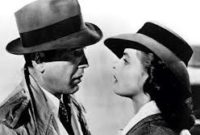 [For example, I was hooked by both Rick and Ilsa in the film
[For example, I was hooked by both Rick and Ilsa in the film 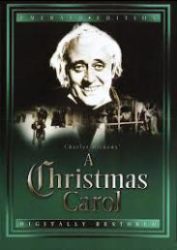 [For example, Charles Dickens brought Ebenezer Scrooge to life on the page in
[For example, Charles Dickens brought Ebenezer Scrooge to life on the page in [Here’s another way to Tell Strong Stories in terms of drama, intensity and power. Make sure every character fears something. Especially your main character. For example,
[Here’s another way to Tell Strong Stories in terms of drama, intensity and power. Make sure every character fears something. Especially your main character. For example, 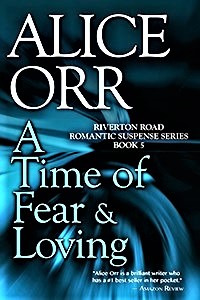
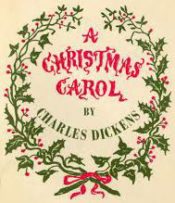 Scrooged Stories are the writer’s ideal holiday gift, because they come with Scrooged storytelling and the Bountiful Writing that can result from opening this particular package all the way into your creative heart.
Scrooged Stories are the writer’s ideal holiday gift, because they come with Scrooged storytelling and the Bountiful Writing that can result from opening this particular package all the way into your creative heart. Our prototype, Ebenezer’s personal human depravity has to do with compassion. He doesn’t have any, not any we can readily discern from his perpetually scowling face and stingy, heartless behavior. Worse still, he is pleased to be exactly what he is and regards the caring world as, in a word, a humbug. Redeeming this dude won’t be easy. But then, that’s what makes Scrooged Stories so reader appealing. The more irredeemable the character is, the more dramatic the story will be. And drama, along with power and intensity, is the wellspring of that pop chart pay dirt I mentioned.
Our prototype, Ebenezer’s personal human depravity has to do with compassion. He doesn’t have any, not any we can readily discern from his perpetually scowling face and stingy, heartless behavior. Worse still, he is pleased to be exactly what he is and regards the caring world as, in a word, a humbug. Redeeming this dude won’t be easy. But then, that’s what makes Scrooged Stories so reader appealing. The more irredeemable the character is, the more dramatic the story will be. And drama, along with power and intensity, is the wellspring of that pop chart pay dirt I mentioned. Once again, Scrooged Stories don’t let us down. We are showered with a bounty of glorious gifts, the most bounteous of which may be the key insight into what make this story as popular as it is. The dramatic contrast of its final act from its initial one. Joy, giddiness, laughter so unrepressed we might think it would break Ebenezer’s stony face. And it does. Which brings us to the most satisfying payoff of all. Magnanimous deeds. Ebenezer scatters goodness, light, and even life in every direction.
Once again, Scrooged Stories don’t let us down. We are showered with a bounty of glorious gifts, the most bounteous of which may be the key insight into what make this story as popular as it is. The dramatic contrast of its final act from its initial one. Joy, giddiness, laughter so unrepressed we might think it would break Ebenezer’s stony face. And it does. Which brings us to the most satisfying payoff of all. Magnanimous deeds. Ebenezer scatters goodness, light, and even life in every direction.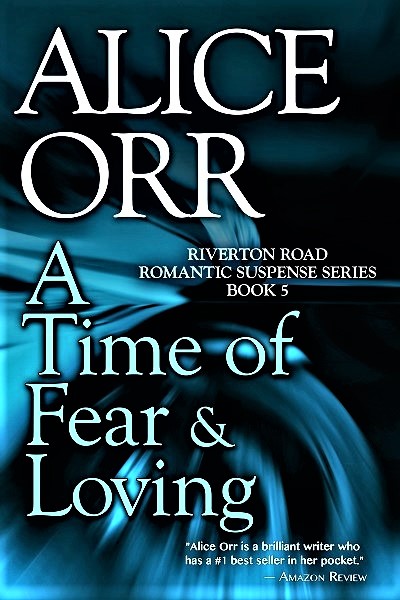 Alice’s new novel, including a Scrooge of her own, is A Time of Fear & Loving – Riverton Road Romantic Suspense Book 5. Available
Alice’s new novel, including a Scrooge of her own, is A Time of Fear & Loving – Riverton Road Romantic Suspense Book 5. Available